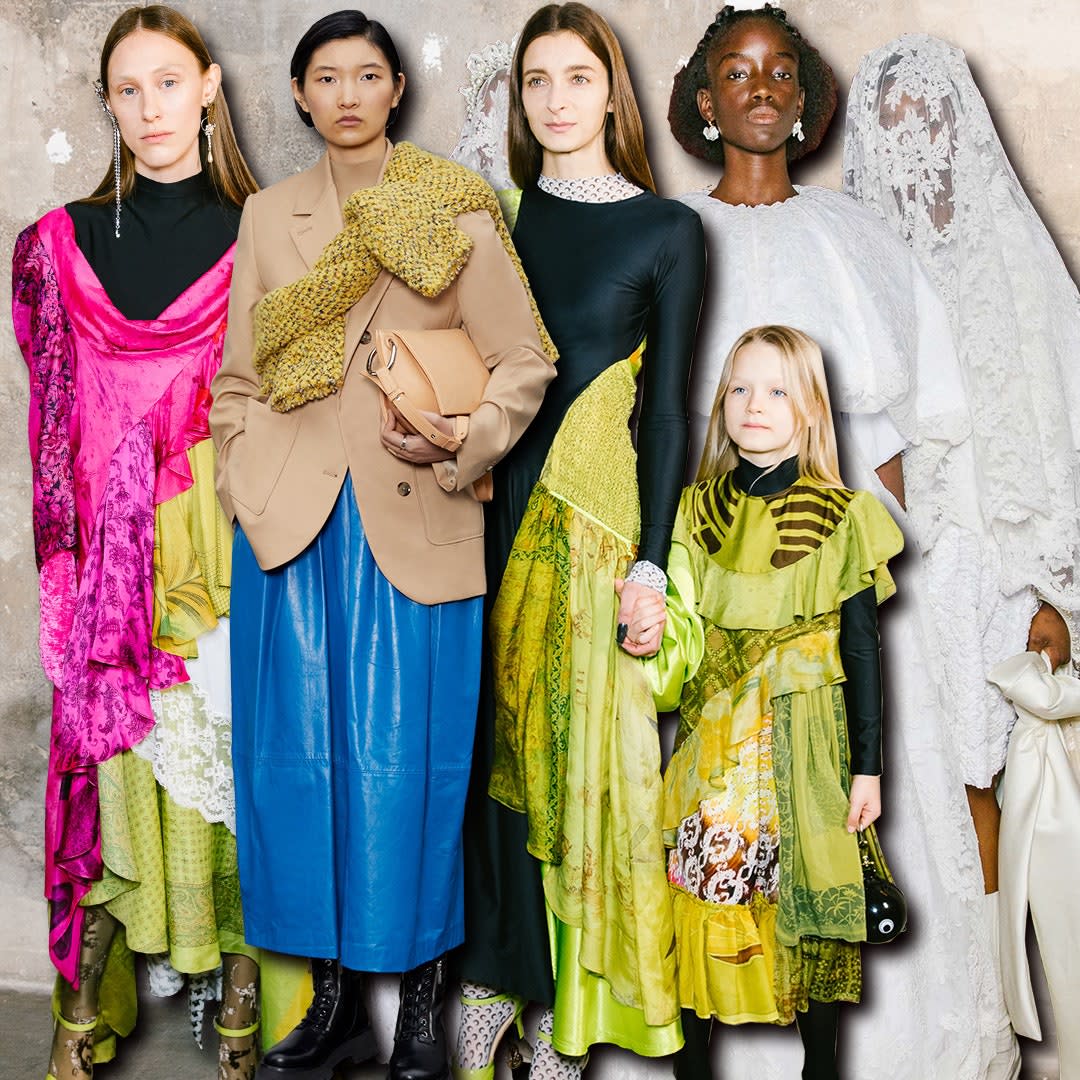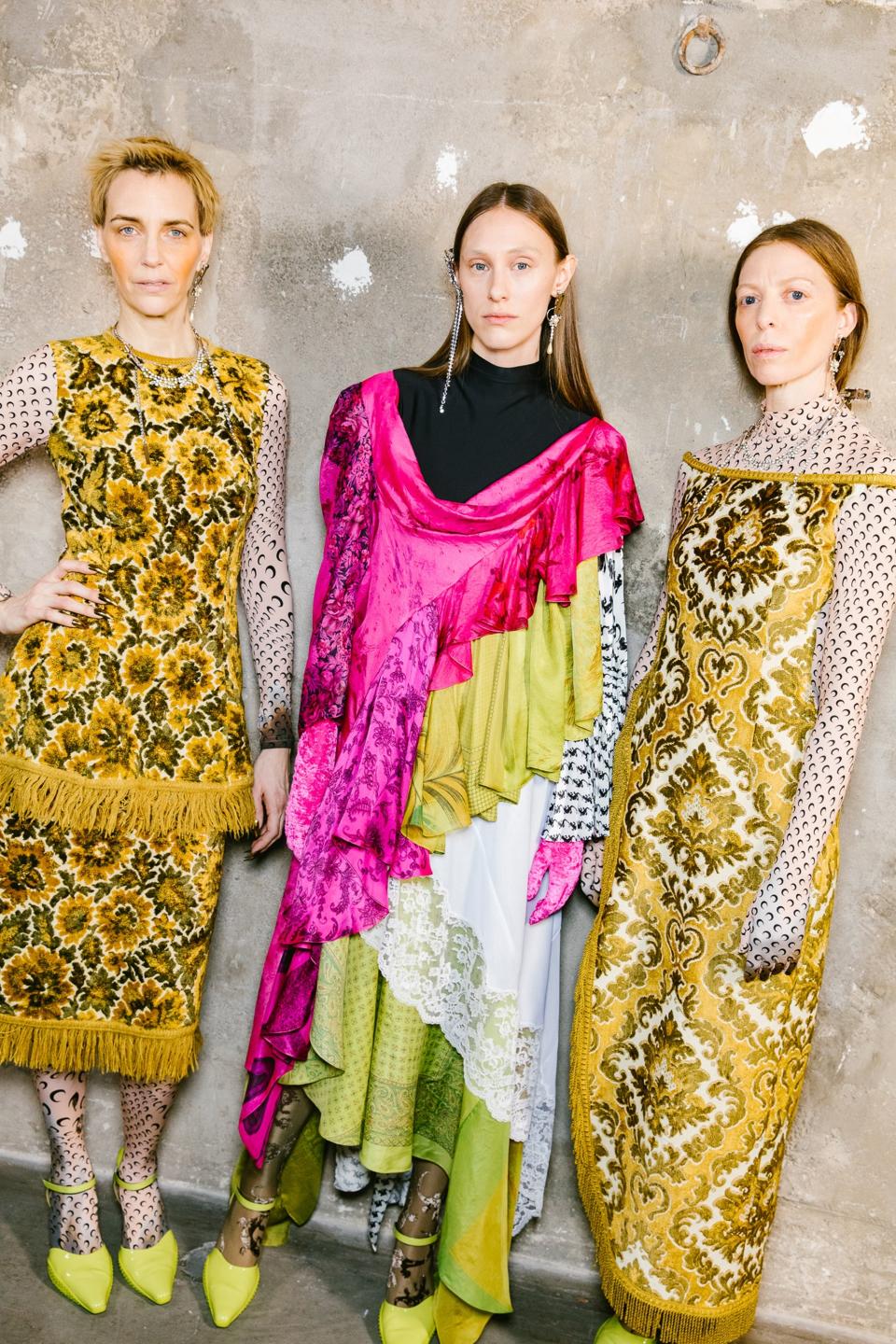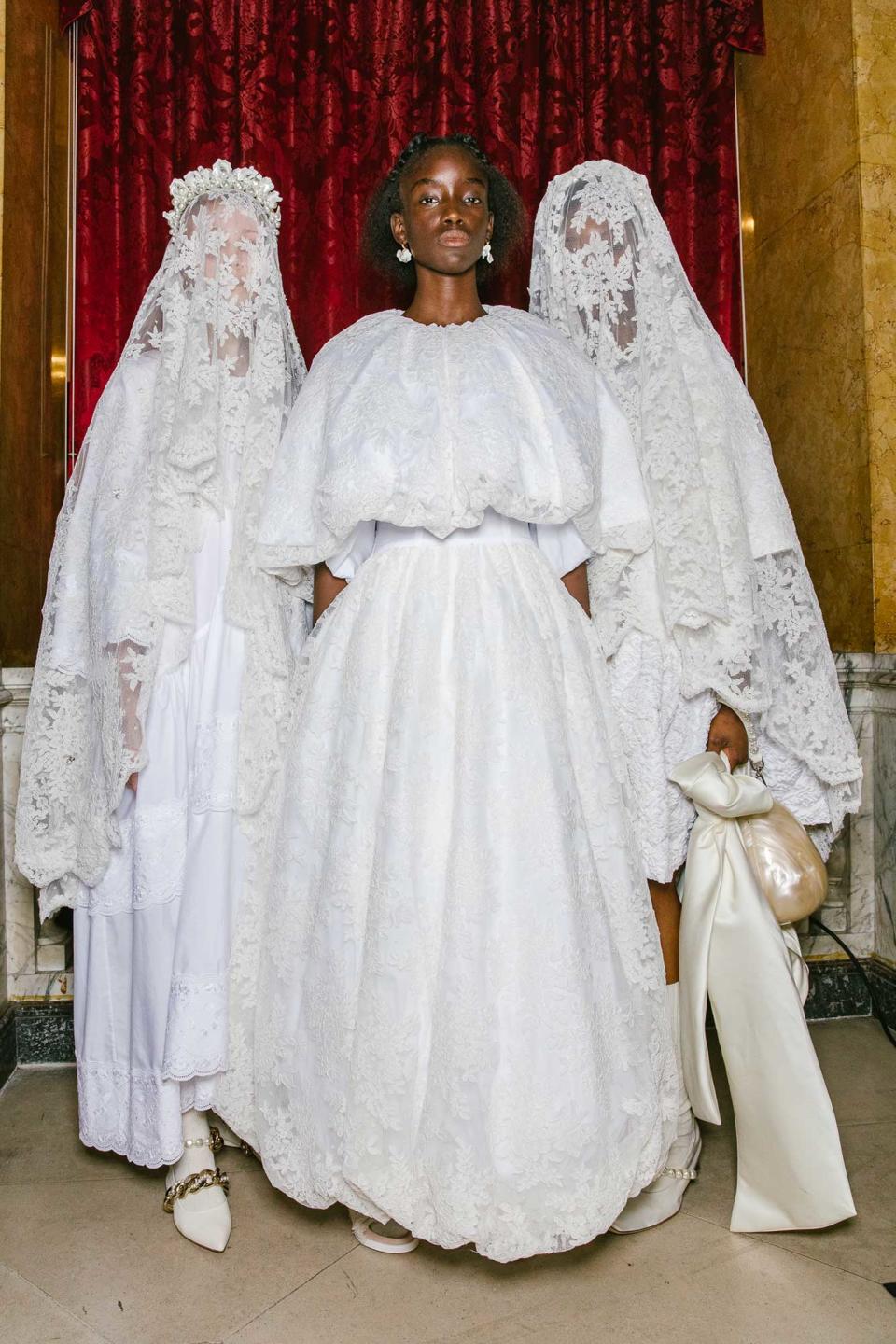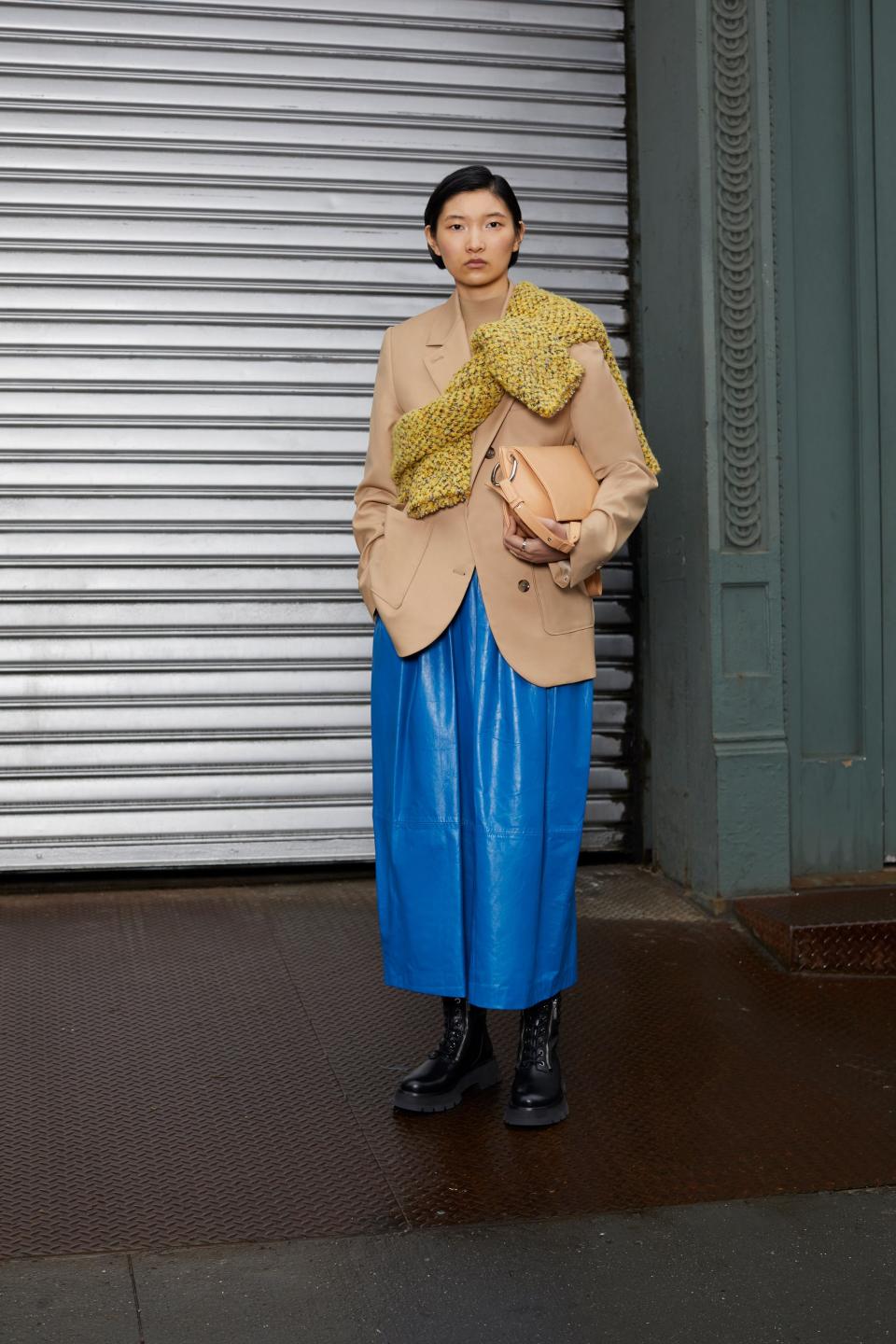‘You Have to Create for the World You’re In’—Marine Serre, Simone Rocha, and 3.1 Phillip Lim’s Wen Zhou Discuss Creativity in Times of Crisis

“How can we be creative outside of the office when our jobs are so tactile?” That question from Wen Zhou, the CEO of 3.1 Phillip Lim, was the starting point of today’s Vogue Global Conversations panel—and it was met with many answers. Vogue Taiwan’s Leslie Sun moderated a talk between Zhou, Marine Serre, and Simone Rocha that touched on topics ranging from those practical concerns—i.e., how to make a garment at home without your textiles, equipment, or team—to the challenges of designing under severe stress and trauma.
For many designers, the instinct has been to embrace optimism and escape, but Serre offered a different perspective: “It’s really important to be realistic and honest and radically open to the world around me,” she said. “I often say I’m like a sponge, because I’m feeling, and I’m opening my eyes, and I’m looking, and most of our work as designers today is really that. You have to create for the world you’re in.”
“This pandemic has made us pause and stop, but it’s almost created a new surge of creativity,” Rocha added. “It’s kind of a scary creativity. But it’s been really, really stimulating—it’s been a time to think and reflect, and take what I know and see how we can do it in a new way.”
Over 45 minutes, the conversation touched on sustainability, digital vs. physical fashion, how the industry needs to evolve, and their advice for young designers.
Making the Most of Remote Work—And Finding a Few Silver Linings
Serre agreed with Rocha’s comment about finding a new “surge” of creativity in lockdown. “It’s quite a creative time actually, and we’ve had to learn a new way to communicate that isn’t so physical, since we can’t actually be draping and fitting and pinning and hugging and fighting! But I think now is a moment to actually get closer to each other—you can’t touch each other, so you have to take care with the words you use. That’s something quite beautiful that’s happened,” she said. “Being closer to each other and to ourselves, and to take the time to really understand where we want to go, who we are, and what we’re doing…. Of course sometimes it’s really hard, but fashion moves so fast, and this has been a chance for us all to slow down.”
Zhou said that at 3.1 Phillip Lim, her team had already been discussing how they could balance their time in the office with remote work to give employees more flexibility. “[We’ve wanted to] find that beautiful balance of creativity, being able to work off-site, and connecting globally while still making product that is emotional. This pandemic has put that conversation into fast-forward. I’m in New York, and our design team is in Taiwan, Brooklyn, Colorado, Shanghai…. We’re learning how to work globally. But I have to say one thing we all feel is that we miss each other, and we want to come back to the office and we absolutely want to hug everyone.”
Sustainability Is a Growing Conversation, But Action Is Needed, Too
Marine Serre, Simone Rocha, and 3.1 Phillip Lim have all embraced sustainability, though in different ways: Serre has become known for upcycling, Rocha invests in time-honored handwork, and Lim prioritizes organic, recycled, and low-impact materials. What they all have in common is just as important: a commitment to craft, longevity, and designing with purpose. The COVID-19 pandemic has brought many of fashion’s issues to light, particularly the industry’s excessive waste and overproduction; in short, there’s too much clothing out there, and not enough of it was designed with intention and care. “A lot of people are talking about slowing down [after the pandemic] and creating a smaller amount of product, which I agree with,” Rocha said. “Mainly, I think what will slow down is the craving for things that are disposable—disposable fashion and ideas. I hope people will want an intimacy with collections and a personal connection with clothes that last a long time.”
Serre added that while it’s great to hear everyone talking about sustainability, “it’s not enough acting. Maybe after COVID-19, we will act a little more,” she said. “I feel we’re all talking about sustainability, but we don’t really know what it means. I think it will be really important to redefine it, and ask what we can do now—and to be honest with ourselves.”
Zhou said her design partner Phillip Lim has offered a succinct definition for their team: “Making less, but meaning more.”

Now’s the Time to Share Your Creativity With the World, Especially If You’re a Young Designer
It’s an understatement to say the pandemic has forced us to embrace technology like never before, though it’s a particular challenge for young designers who would normally be showing their work to editors, buyers, and customers IRL to build their businesses. Rocha advised a mix of digital and physical interactions: “If I was a brand-new [designer] today and made a collection, I would definitely want to photograph and film it and send it to people [digitally], but honestly, I would probably put it in the post and [mail it to] the stores I love, and the magazines I love, because the physicality of what you [create] is so important. The textiles, the handwork, the way it’s stitched, sometimes that can only be felt in the hand. If I was starting today, I would be sending my collection to Dover Street Market, saying, ‘Look at this!’ ”
Serre also encouraged designers to use YouTube, Instagram, and other digital platforms to make their voices heard. “It’s our only way to connect, and if you have something to say, say it,” she said. “You shouldn’t feel shy. No one has the right answer on the best way to to do fashion today, and I would encourage people to be honest and share [online]. People are really reactive. When I see people liking a video I post, or a regenerated garment we posted, it feels really good, because it feels like a community that can share and discuss and change things, I hope. And construct the future in a better way together.”
Zhou offered some business advice for designers young and established: “No one in this space has ever dealt with something like this,” she said. “By reminding myself that this is all new to everyone, it kind of gave me the authority to lean into my gut and my intuition as an entrepreneur, and to do things that feel right for our company and our team. I think that’s really important, because you can listen to other people’s advice, but you know what’s right for your business.”

The Industry Has to Change—And Much of It Comes Down to Doing Less
Over the past eight weeks, designers, buyers, and editors have had the unexpected opportunity to slow down, press pause, and propose radical shifts in the industry. With the resort, men’s, and couture shows postponed or canceled, we’re thinking about how many shows and seasons we really need each year. With stores temporarily closed, we’re considering the amount of product on the shop floor and the out-of-sync timing of deliveries. Overall, it’s the rapid, breakneck pace of the industry we’re hoping to change, because the current model isn’t sustainable—not for the environment, and not for designers’ businesses, either.
“People are talking about merging pre-collections and main lines, or men’s and women’s,” Rocha said. “That would [reduce] travel and the amount of investment in shows, and I think you can actually dilute your message as a designer [if you have too many shows]. One practical way of addressing that would be to change the delivery timelines of when clothes are on the shop floor, because that has changed people’s perception of when they want things, how long they want to wait for things, and they’re responding to sales rather than seasons. We don’t need to put coats on sale in November,” she continued. “I think if those things were considered, and if designers, wholesalers, and retailers could agree, that would slow the pace in a way that leaves a lot of room for creativity.”
“I agree with you, Simone,” Serre added. “I also only do two collections a year, and it’s enough to make it feel relevant and new, to not repeat yourself, to upcycle, to recycle, to think about how you’ll do your production. We talk about the shows and creativity, but it’s also about what happens between the show and when you deliver the collection. It’s a lot of energy to produce a garment, to make it with love in a good factory. That’s something we often forget. I am super-happy to be here today to share that, because I don’t know where I could have shared this before. This is a great opportunity to see that people want to change things.”
Zhou concluded with a call for designers, consumers, and the entire industry to consider the supply chain—and to rethink the way we measure success in fashion businesses. “We have to ask, who are the people making our garments? Who is putting this in front of us [so we can] choose to buy better? So we can choose not to vote for fast fashion, and choose to buy less? So it isn’t just about price, but about art and craft?” she said. “If I had a magic wand and could make our industry better, I would want us all to work together and not measure our businesses by profit only. Just like the way we shouldn’t measure our students only with grades, we shouldn’t measure our industry just by profit margins. Human resources and art should be something we can all share, as consumer and as creators.”

Watch the full panel here:
Originally Appeared on Vogue

